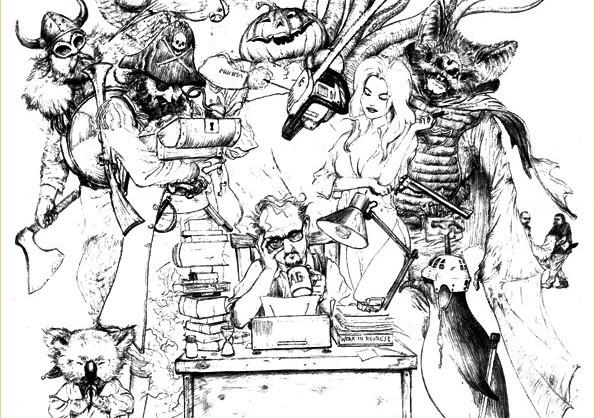For some time, I have found the ways we traditionally think about character in screenwriting unsatisfactory. The traditional model has a single hero go on a journey which ends in success out in the world, or internally in terms of self-knowledge, or both. Sometimes, but not often, the journey ends in failure. That failure is because the hero has been unable to learn, has turned away from self-knowledge.
In life, you can have self-knowledge and still fail, and many people succeed without self-knowledge. Privileged or lucky people, like men in a man’s world, white people in a white person’s world, and so on. Other people don’t succeed because of the prejudices of people around them, or of the society they are in. It’s nothing to with who they are, or what they do.
For lots of characters, the model of a single hero going on a journey and achieving their goal because they take the right actions, or learn the right thing, is unsatisfactory and unrealistic. You might be able to tell a story of one woman succeeding in a man’s world, or one black person succeeding in a white world, or one gender fluid person succeeding in a gender binary world, but those are all stories of exceptional heroes.
Not every woman, person of color or non-heterosexual has a story that suits the exceptional single hero paradigm (neither does every straight white man). What if your character doesn’t have one goal, one simple “want”? What if they want to have a successful career, a happy relationship, and be a good mother, all at the same time? What if they don’t want to have to choose?
The models we have been using don’t work for all characters. The traditional model in screenwriting in the late 20th century was based on ideas explored, defined and popularized almost entirely by white men, and resulted in stories favoring single white male heroes. That’s no longer adequate in a world where diversity and non-uniformity are increasingly valued. And where the characters we want to explore are often diverse and non-uniform.
What if the Hero’s Journey leads only to a dead end?
Moving forward, it’s not as simple as saying “well, we’ll concentrate on different kinds of characters, of different gender, race and sexual identity.” Much of the way we write characters is based on the traditional ideas we are looking to move beyond. The issues are a lot deeper than the surface nature of our characters.
The idea of a clear journey through a world assumes that there is one world a character is moving through. But a person of color may exist in a world within worlds. She might live in an immediate world where her skin color is unimportant but work in a world where her skin color defines how she is treated. Being a woman wishing to work may be a huge problem in her immediate world, and of little importance in her working world. And she may be hiding the fact that she is a lesbian from everyone, in both worlds. Her sexuality is a secret third world.
Where is her single journey in that story? What is the single world she is moving through? She doesn’t fit the model. Does that mean we can’t write her?
Of course not. We need to look at character in new ways, ways that give us useful practical knowledge that helps us to write well.
One new way of thinking is to explore the relationship between Character and Power. This is at the heart of my new workshop, because understanding how Power works in a story, who has it, what you must do to get it, and what happens when you try, gives insight into the nature of character and action in a way that linear models of character development don’t. It leads you to the heart of your character story.
Understanding the dynamics of a story of a woman in a man’s world is relatively simple. This kind of story is a “single-world story”, where there is only one power hierarchy for her to navigate. “Silence of the Lambs” is this.
The dynamics of a story of woman in a woman’s world which is in turn contained within a man’s world is more difficult. This is a “double-world story”, with two power hierarchies for her to make her way through. For the heroine of this story successful action, doing something that has the result you want, is extremely difficult. She is a long way from the traditional screen hero model. “Winter’s Bone” is this.
There are other kinds of characters though, characters who because of their gender, race or sexuality, or a mix of these things, don’t have access to power. How do you write disempowered characters in such a way as to make them compulsive? And what if your story is not about them becoming powerful, but about what it is like to be powerless?
We will be looking at these kinds of characters and stories too, as well as unfolding the secrets, in some detail, of a story genre which specializes in exploring what power means, particularly for women, how it is found, and how it is expressed. A genre that has always generated amazing female characters, and probably because of this has been pushed to the side for too long. The Melodrama.
It’s open to anyone interested in these ideas. Full of clips, examples, provocation and fun. Practical and useful to anyone working on screen stories: this is not about theory, it’s about thinking hard and in new ways about diverse characters in order to make our screenwriting better.
And as usual plenty of notes to take away with you from the workshop.
Sign up HERE.
